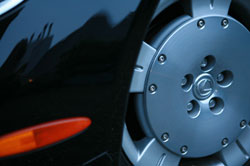Advanced coatings for magnesium
Magnesium is the third most commonly used metal in industry, steel and aluminium being at the top in the league table. The automotive, aerospace, medical and sports industries all manufacture products that require strength and durability yet have a low density. However, despite their properties, the use of magnesium alloys is still limited partly because of its predisposition to corrosion. Foreign materials that hold moisture on the surface can promote corrosion and pitting of some alloys - unless the metal is protected by coatings that have been properly applied. Another drawback is that many coatings used at present are the source of toxic pollutants including metals and fluoride anions. The ambitious objective of the EC-funded project, NANOMAG was to develop corrosion and abrasion resistant coatings using environmentally friendly processes that were also economic. A team of project partners at Haute Ecole Arc ingeniérie in Switzerland used a low-temperature sol-gel dip coating technology to apply SiOx and multicomponent oxide coatings to produce a thin film. The precursors used were tetraethylorthosilicate and aluminium-sec-butoxide. Both of these possess the attractive property of excellent adhesion to the alloy surface. Several types of coating were developed including multi-component oxides containing silicon, zirconium and cerium oxides and a polymer layer applied afterwards. After the application of the films, accelerated corrosion, adhesion and hardness tests were performed. The results showed that after almost one hundred exposures to the salt and spray test, there was no pitting evident on the coated alloys. However, end-user requirements meant that the polymer layer investigations were suspended. Also developed was a chromium nitride (CrN) coating that was applied using plasma-assisted physical vapour deposition (PAPVD) at the same low temperature of 180ºC. Not only that but the films were applied to a new magnesium alloy that resulted from NANOMAG. Recent demand for lighter more fuel-efficient vehicles and the developing aerospace programme that require low-density yet strong material have increased manufacturers' interest in magnesium. Both the multi-component coatings applications and the CrN coating have been upgraded to industrial process scale for use in medium and large areas.







